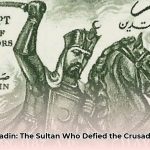Ever wondered how some individuals effortlessly navigate dozens of languages? It’s not an innate superpower; it’s a combination of understanding how their brains function, effective learning methodologies, and unwavering dedication. This article delves into the fascinating world of hyperpolyglots – people with exceptional language skills – exploring the science behind their abilities, their learning techniques, and what distinguishes them from the average language learner. Moreover, we’ll distill actionable tips and strategies that you can implement to elevate your own language proficiency, regardless of your current skill level. For optimal retention, consider using spaced repetition techniques. Prepare to uncover the secrets of the multilingual mind and embark on your own path to linguistic mastery!
Decoding Multilingual Fluency: Insights from Hyperpolyglots
The capacity to fluently speak numerous languages—a talent often attributed to “hyperpolyglots”— stands as a truly captivating phenomenon, leaving many to ponder: How is it even possible? Is it an inherent gift, or is there a systematic approach to achieving multilingual mastery? The answer, as it turns out, encompasses a compelling synthesis of cognitive capabilities, meticulous practice, and strategically optimized learning techniques. It stands as a testament to the remarkable adaptability and potential of the human brain.
The Neural Landscape of Language Proficiency: Exploring the Polyglot Brain
Scientists have long been captivated by the inner workings of hyperpolyglots’ brains – individuals capable of speaking six or more languages with ease. Advanced brain imaging methods, such as functional magnetic resonance imaging (fMRI), have yielded intriguing discoveries. These scans have revealed that hyperpolyglots exhibit less intense brain activity in language-processing regions when compared to monolingual speakers. This intriguing finding doesn’t imply reduced cognitive effort; rather, it hints at heightened neural efficiency. Similar to a seasoned pianist effortlessly executing a complex piece, hyperpolyglots achieve language comprehension and production with remarkable ease, owing to years of dedicated practice and finely tuned neural pathways.
Diverse Approaches to Linguistic Mastery: Tailoring Learning to Your Style
There is no universally applicable formula for becoming a polyglot. The journeys undertaken by these language virtuosos are as unique as their linguistic repertoires. While some thrive in solitude, immersing themselves in self-study, others flourish in social settings, actively engaging in language exchange. Their learning methodologies are equally diverse. Some immerse themselves deeply in foreign cultures, residing abroad and interacting with native speakers daily, while others prefer a more structured approach, leveraging apps, textbooks, and online resources. This diversity underscores the array of pathways that can lead to multilingual proficiency.
The question then arises: Is it innate talent, or sheer determination? The answer likely lies in a combination of both. While some individuals may possess a natural aptitude for language acquisition, characterized by an inherent ability to discern new sounds and grammatical structures, consistent, dedicated effort remains indispensable. Fluency in multiple languages isn’t achieved overnight; it demands sustained commitment, persistent effort, and a willingness to overcome challenges along the way.
The Blueprint for Language Success: Essential Elements for Language Acquisition
Irrespective of whether your goal is to master two or twenty languages, several key factors play a pivotal role in language acquisition.
- Age Matters, But It’s Not Definitive: While commencing language learning at a young age undeniably offers some advantages, it’s by no means a prerequisite for achieving fluency later in life. The brain’s plasticity—its capacity to adapt and reorganize itself—remains intact throughout the lifespan, enabling adults to attain remarkable levels of language proficiency.
- Motivation: The Driving Force Behind Your Language Journey: A genuine passion for learning a language serves as the most powerful catalyst. Your motivation will sustain you through challenges, encouraging you to persevere when you encounter inevitable plateaus. Identify what ignites your enthusiasm for language learning; what is your “why”?
- Strategic Learning: Optimizing Your Approach: Employing effective learning strategies can significantly enhance your chances of success. Techniques such as spaced repetition systems (e.g., flashcards) aid in solidifying vocabulary and grammar, while complete immersion in a language-rich environment accelerates the learning process. It’s crucial to actively engage with the language; speak it, write it, and interact with it in meaningful ways.
- Overcoming Language Anxiety: Embrace Imperfection: Language anxiety often presents a significant hurdle for learners. However, it’s essential to recognize that making mistakes is an inherent aspect of language learning. Embrace them as invaluable opportunities for growth and refinement.
Debunking Myths About Hyperpolyglots: Separating Fact from Fiction
Let’s dispel some widespread misconceptions about hyperpolyglots:
- Myth 1: They Possess Exceptional Intelligence: While hyperpolyglots possess remarkable language skills, this doesn’t automatically equate to superior general intelligence. Language ability is distinct from overall cognitive prowess, and there’s no minimum IQ threshold for multilingualism.
- Myth 2: Language Learning Comes Effortlessly to Them: Despite some individuals claiming relative ease in language acquisition, most hyperpolyglots attribute their success to years of intense, dedicated training. They have invested countless hours studying, practicing, and immersing themselves in their chosen languages. It’s a marathon, not a sprint.
Your Path to Polyglot Potential: Practical Steps for Language Learners
What steps can you take to embark on—or enhance—your own language learning journey?
- Diversify Your Learning Methods: Incorporate a variety of learning methods to suit your individual preferences; textbooks, apps, language exchange partners, and immersion programs. A multifaceted approach caters better to diverse learning styles.
- Consistency is Key: Short, daily practice sessions are significantly more effective than sporadic, intensive study bursts. Regular engagement keeps the language fresh in your mind.
- Embrace Errors as Learning Opportunities: Mistakes are inevitable; embrace them as valuable feedback and opportunities for improvement. Don’t let the fear of making mistakes impede your progress.
- Immerse Yourself in the Language: The most effective way to learn a language is to use it actively. Immerse yourself as much as possible by listening to music, watching movies, reading books, and engaging in conversations.
- Find a Language Exchange Partner: Practicing with a native speaker provides invaluable real-time feedback and authentic conversational practice.
The Future of Polyglot Research: Charting New Frontiers in Language Learning
While substantial progress has been made in elucidating the cognitive and neural mechanisms underlying multilingualism, much remains to be explored. Scientists are actively investigating:
- Genetic Predisposition: Research endeavors are underway to identify potential genetic factors that may contribute to a predisposition for language learning.
- Longitudinal Studies: Long-term studies are essential to monitor language development across the lifespan, shedding light on the interplay between learning strategies and brain plasticity.
- Advanced Brain Imaging: Ongoing advancements in neuroimaging techniques hold the promise of providing even more detailed insights into the neural processes underlying language acquisition and proficiency in polyglots.
The journey of hyperpolyglots transcends mere linguistic mastery; it offers a compelling glimpse into the brain’s remarkable capacity for adaptation and learning. By embracing the principles of dedicated practice, strategic learning, and a resilient mindset, we can all unlock our own language learning potential. The possibilities are limitless.
Replicating Hyperpolyglot Brain Plasticity: Targeted Language Learning Techniques
Key Takeaways:
- Polyglots, proficient in five or more languages, exhibit remarkably efficient brain activity while using their native language, indicating heightened neural processing efficiency.
- The origins of this neural efficiency remain under investigation, with both innate predispositions and acquired adaptations playing potential roles.
- By emulating the strategies employed by hyperpolyglots, we can enhance our own language skills and stimulate brain plasticity.
The Polyglot Brain: A Streamlined Language Processing Machine?
How do some individuals achieve fluency in numerous languages? The secret potentially resides in their brains’ exceptional efficiency. Studies employing functional magnetic resonance imaging (fMRI) consistently demonstrate that hyperpolyglots – individuals proficient in multiple languages – exhibit less brain activation when speaking their native language compared to monolinguals. It’s akin to their brains operating with greater streamlining, processing information with reduced effort. This phenomenon underscores the brain’s remarkable plasticity. But how do they attain this efficiency? And crucially, how can we replicate hyperpolyglot brain plasticity through targeted language learning?
Nature vs. Nurture: Unraveling the Origins of Polyglot Proficiency
The debate surrounding whether this neural efficiency stems from innate predispositions or acquired adaptations remains vigorous. Some propose that a genetic inclination towards language learning might exist, while others argue that it primarily arises from years of intensive language practice. The truth likely lies in a complex interplay of both factors. Early childhood language exposure undoubtedly exerts a significant influence, while intensive, focused study can shape brain circuitry.
Unlocking the Secrets of Linguistic Success: Focused Language Learning and Cognitive Training
What insights can we glean from these linguistic masters to enhance our own language acquisition abilities? A multifaceted approach is essential.
- Immersion: Surround yourself with the language. Immerse yourself in environments where the language is spoken, listen to music and podcasts, watch movies, and read books. Full immersion functions as a comprehensive cognitive workout.
- Spaced Repetition: Abstain from attempting to learn everything simultaneously. Space out learning sessions, revisiting material at progressively increasing intervals to reinforce memory encoding.
- Active Recall: Eschew passive review. Actively test your knowledge through flashcards, speaking practice, and written exercises.
- Embrace Mistakes: Recognize that errors represent invaluable learning opportunities. View them as a feedback mechanism for refining understanding and accelerating progress.
- Discover Your Individual Learning Style: Acknowledge that each polyglot employs unique learning strategies. Experiment with various techniques to identify what resonates best with your learning preferences and motivational factors.
- Consistency: The Cornerstone of Success: The true key lies not in innate talent but in consistent effort. Sustained engagement and dedicated practice are paramount for fostering brain plasticity and achieving proficiency.
Long-Term Strategies for Language Acquisition and Brain Development
Attaining true polyglot mastery necessitates a long-term commitment. The objective transcends mere vocabulary memorization; it entails reshaping neural pathways through sustained effort, consistent practice, and a willingness to embrace continuous learning.
Longitudinal studies are essential for comprehensively understanding the long-term effects of language learning on the brain. The journey towards becoming a hyperpolyglot epitomizes this principle. We are only beginning to unravel the intricate relationship between language acquisition and cognitive abilities.
The Neuroscience of Hyperpolyglottism: Unveiling the Secrets of Multilingual Expertise
Key Takeaways:
- Hyperpolyglots exhibit distinctive brain activity patterns, characterized by efficient processing of their native language.
- Reduced brain activation in language-related areas does not signify diminished effort but rather reflects optimized processing strategies.
- Early language exposure potentially contributes to this enhanced processing efficiency.
- Further research is needed to fully elucidate the neural mechanisms underlying the “polyglot brain.”
Streamlined Language Processing: The Neural Signature of Multilingualism
What distinguishes individuals fluent in numerous languages? Brain imaging studies offer compelling insights. Research employing functional magnetic resonance imaging (fMRI) reveals that hyperpolyglots often exhibit less intense activity within the left hemisphere’s language network when utilizing their native tongue, compared to monolingual speakers. This does not imply reduced cognitive engagement; instead, it suggests a heightened degree of efficiency. Analogous to two computers executing the same task – one consuming more power while the other performs more elegantly – the contrast between monolingual and hyperpolyglot language processing is striking.
Native Language: A Privileged Status in the Linguistic Landscape
Intriguingly, even among hyperpolyglots, the native language retains a unique prominence. Studies consistently demonstrate lower brain activation when processing their mother tongue compared to other languages, even those spoken fluently. This observation underscores the significance of early language exposure in shaping the brain’s linguistic architecture. It’s as if the brain’s foundational programming, once established, operates with enhanced smoothness.
Untangling Nature vs. Nurture: The Complexities of Language Acquisition
While these distinctive patterns are evident, the underlying mechanisms remain somewhat enigmatic. Is this reduced brain activation a consequence of extensive practice, or is there an inherent predisposition? Current research cannot definitively resolve this question. A complex interplay of genetics, environment, and learning strategies likely contributes. Further investigation, particularly longitudinal studies tracking brain changes over time, is warranted to fully explore this interplay.
Beyond the Left Hemisphere: Charting the Brain’s Language Networks
The narrative extends beyond the confines of the left hemisphere. The right hemisphere’s role merits greater attention. How does its contribution differ between monolinguals and polyglots? This represents another crucial research avenue. Are there subtle variations in lateralization patterns that remain undetected? Uncovering these answers could significantly advance our understanding of language learning.
The Recipe for Multilingual Success: Age, Motivation, and Effective Learning Strategies
Several factors likely contribute to multilingual mastery. Age of acquisition exerts an influence, with early exposure often leading to greater fluency. Motivation stands as a key determinant, with a genuine desire to learn significantly impacting success. Furthermore, strategic learning approaches, such as immersion and spaced repetition techniques, optimize acquisition. And of course, mitigating language anxiety enhances engagement and reduces stress. The intricate interplay of these variables necessitates further study.
Debunking Myths: Distinguishing Fact from Fiction in Language Acquisition
Contrary to common misconceptions, polyglots do not inherently possess superior intelligence. While intelligence likely contributes, it is not the sole determining factor. Similarly, acquiring multiple languages is not an effortless endeavor. It demands dedication, practice, and persistence. The “polyglot brain” is not inherently different but rather shaped by experience.
Practical Tips for Aspiring Polyglots: A Step-by-Step Guide
- Embrace diverse learning strategies: Experiment to discover what resonates best with your individual learning style.
- Consistency is crucial: Regular, even brief, practice proves more effective than infrequent marathon sessions.
- Don’t fear mistakes: Recognize that errors are a natural and integral part of the learning process.
- Immerse yourself: Surround yourself with the language whenever feasible.
- Find what motivates you: Tap into your passion to fuel your perseverance.
Future Directions: Advancing the Understanding of Multilingualism
Future research must prioritize several key areas. Large-scale studies examining the genetic influence on language aptitude are imperative. Longitudinal research is essential to trace the neural changes that occur over time as individuals gain fluency. Advancements in brain imaging techniques could enable greater precision in mapping the neural networks involved in multilingualism. This enhanced understanding promises to revolutionize our approach to both language acquisition and rehabilitation.
Brain Plasticity and Age: Examining Lifespan Language Acquisition
Key Takeaways:
- Age influences language learning, but it’s not the only factor determining success.
- Brain plasticity allows for learning throughout life, though ease varies.
- Personal learning strategies and motivation are crucial.
- Debunking the myth of effortless acquisition is vital for realistic expectations.
- Effective strategies include immersion, spaced repetition, and embracing errors.
The Neuroscience of Multilingual Brains: Unveiling the Secrets
How do polyglots achieve such remarkable feats? It hinges on Brain Plasticity and Age: Examining Language Acquisition Across the Lifespan. The brain acts as a muscle, strengthened by training. Learning sculpts it, creating new pathways. Neuroimaging shows different activity patterns in polyglots versus monolinguals, revealing efficiency. Polyglots aren’t inherently smarter but show neural adaptation.
Varied Paths to Linguistic Mastery: Understanding Individual Learning Styles
Polyglots aren’t alike. Learning styles differ; some thrive in immersion, others in structured study. Talent or dedication? Research suggests both.
Age: A Factor, Not a Limitation
The “critical period hypothesis” suggests learning declines after childhood. However, Brain Plasticity and Age: Examining Language Acquisition Across the Lifespan reveals that while younger learners acquire pronunciation easier, adults possess significant plasticity. Many factors affect success, making age just one factor.
Proven Learning Strategies
Immersion helps. Spaced repetition reinforces learning. Embrace errors – they’re part of learning! Diverse tailored resources are key.
Debunking Myths
Polyglots aren’t born gifted. Effortless acquisition is a myth. Strategic approaches and persistence are vital. Genetic factors are minor; consistent practice is paramount.
Practical Tips for Learners: A Guide
- Set realistic goals.
- Find your learning style.
- Use diverse resources.
- Consistency is key.
- Embrace errors.
- Find a language partner.
The Future
Further research is needed on Brain Plasticity and Age: Examining Language Acquisition Across the Lifespan. Longitudinal studies are vital. Exploring genetic factors and refining imaging techniques will provide deeper insight.
- Overcome Imposter Syndrome: A Proven Guide for Success - August 3, 2025
- Deepfake Technology Crisis: Protecting Truth and Media Now - August 3, 2025
- Master Polyglots: How Some People Master Dozens of Languages: Proven Methods - August 3, 2025















